
Osteoarthritis
There are many common health conditions that affect men and women differently, including osteoarthritis (OA), caused by wear and tear on the joints. “Women have about three times higher risk of osteoarthritis than men,” says Gina Tran, MD, PIH Health Family Medicine. “The way a woman’s body is structured may play a role, as women tend to have more flexible joints and elastic tendons than men.” This laxity is useful during pregnancy and birth, but also puts women at risk of sprains and injuries, leading to future OA. “Women also tend to have wider hips, which may affect the alignment of the knees and causes stress on them,” she says. In addition, the U.S. Centers for Disease Control and Prevention (CDC) notes that women over the age of 50 are at increased risk of OA. “The loss of estrogen could be a contributing factor, as estrogen protects the cartilage and the joint from inflammation,” Dr. Tran says. To reduce your risk, the Arthritis Foundation recommends physical activity and maintaining a healthy weight.
These 5 simple lifestyle changes can help reduce your risk of disease.
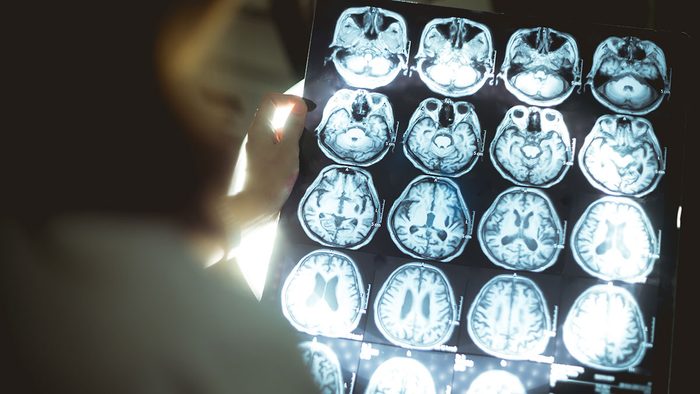
Alzheimer’s disease
The Office of Disease Prevention and Health Promotion notes that almost two-thirds of Americans with Alzheimer’s disease, marked by a loss of cognitive functioning, are women. Because the risk of the disease goes up as we age, and women live longer than men, it was long assumed that was the reason for the discrepancy. But recent research suggests other factors may play a role. Genetics may be at play, as well as hormonal changes. “Menopause and plummeting estrogen levels, which on average begins at 51, may account for the difference,” Judy Pa, PhD, assistant professor of neurology at Keck School of Medicine at USC and co-author of a recent study, said on the university’s website. To reduce your risk, keep your mind and body active, get enough sleep, and eat a healthy diet. Medical treatments can slow the progression of the disease, but can’t stop it.

Depression
According to a recent National Center for Health Statistics survey, women were twice as likely to have suffered from depression as men (10.4 vs. 5.5 percent). “Women have more biological origins for depression than men with more changeable neurochemistry,” says psychologist Deborah Serani, PsyD, award-winning author of Depression in Later Life. “Monthly hormone changes, shifts, and dips after giving birth, and before and during menopause heighten the onset of depression.” How women think and process emotions, as well as internalizing stress, can lead to lowered brain functioning in areas responsible for mood, she says. If you feel hopeless, irritable, or overwhelmed, see your doctor—treatment, including medications or therapy, is available.
If you exercise this much each week, your risk for depression drops.
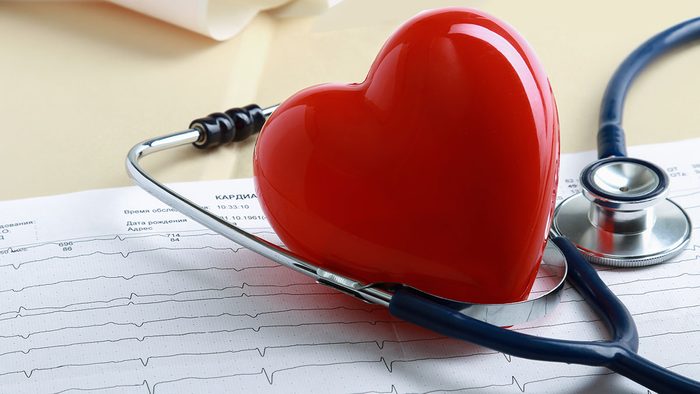
Heart disease
Heart disease is the number one killer of both men and women—but women are more likely to die after a heart attack than men, and have other factors that can make the condition more serious. “The question about why more women die in the first years after a heart attack is often discussed, and multiple theories have been posed to explain,” says Gerald E. Beckham, MD, PIH Health. “The most common thought is that women who develop heart disease are ‘more sick,’ or have more co-morbidities like diabetes, atrial fibrillation, and smoking, than men of the same age.” In addition, women often have atypical symptoms of chest pain which lead to delays in presentation and diagnosis, causing a worse outcome, he says. To reduce risk, Dr. Beckham advises 30 minutes of exercise five days a week, a healthy diet, and regular checkups for cholesterol, diabetes, and high blood pressure. Read on to find out the truth about seven heart disease myths.

Anxiety
According to the U.S. Department of Health and Human Services, women are more than twice as likely as men to be affected by anxiety. “Studies suggest that fluctuating hormones can set into motion feelings of anxiety, particularly low levels of corticotropin-releasing factor (CRF), a hormone that organizes stress responses,” Dr. Serani says. “Because CRF is lower in women, it makes them twice as vulnerable as men to stress-related disorders.” And anxiety doesn’t just have mental effects: One study showed women with the highest anxiety levels were 59 percent more likely to have a heart attack and 31 percent more likely to die from one than women with the lowest levels. If you have anxious thoughts, are avoiding everyday activities, and have physical symptoms like rapid heart rate and shortness of breath, see your doctor. Treatment may involve counselling and/or medicine.

PTSD
Although we may associate post-traumatic stress disorder (PTSD) with male veterans, women actually have higher rates of the condition. “Women are twice as likely to experience PTSD than men because they are exposed to more emotional, sexual, and physical abuse than male counterparts,” Dr. Serani says. “They also tend to be victims of trauma at earlier ages than boys.” If you are a survivor of a traumatic event and have nightmares, insomnia, depression, or anxiety, trauma counselling can help. See your doctor or visit the National Center for PTSD.
This common type of stress can literally give you a heart attack.

Urological problems
Anatomy is largely responsible for why women get more urinary tract infections (UTIs) and incontinence, or bladder leaking, than men. “A woman’s urethra is in close proximity to the vagina and rectum where many bacteria live, which puts them at higher risk for urinary tract infections,” says Leslie Gonzalez, MD, PIH Health OBGYN. “Childbirth, age, and obesity all increase the incidence of incontinence for women.” Pregnancy puts a strain on the pelvic floor muscles, which are crucial to the support of the bladder and bladder neck, and can have long-lasting effects, Dr. Gonzales says. Drinking plenty of water can help avoid UTIs, and pelvic floor exercises can help prevent incontinence.

Lupus
Lupus, an autoimmune disease, affects women much more often than men—according to the HHS, about nine out of 10 lupus diagnoses are in women of childbearing age (15 to 44). “Autoimmune” means the body attacks its own tissue, and with lupus, this can affect everything from the skin to internal organs. Because it strikes younger women, it’s thought that higher estrogen levels, combined with environmental factors, may play a role. Recent genetic research has also suggested that the presence of two X chromosomes in women ups their risk of the disease. Because symptoms are varied and vague, it can be hard to diagnose, but ask your doctor about your risk if you have muscle or joint pain, a facial rash, fatigue, and chest pain. Although there’s no cure, treatments including drugs and lifestyle modifications can reduce flare-ups.
5 times Selena Gomez handles this autoimmune disease like a queen.

Eating disorders
Researchers aren’t completely sure what causes anorexia, bulimia, and other binge eating disorders, but the HHS says it’s likely a combination of biology and social experiences that affect women more than men. More women die from anorexia, in which they don’t maintain a healthy body weight, than any other serious mental health problem. “Because society places unattainable perfectionistic goals regarding beauty for women, females are prone to more eating disorders and body image issues than men,” Dr. Serani says. “Girls are socialized about thinness and beauty from the time they’re very young.” Brain chemistry and psychological traits likely also make some women more susceptible. If you have unhealthy eating habits, treatment including nutritional and psychological counselling can help get your disorder under control.
Signs you may have an eating disorder—and what to do about it.

Sexually transmitted infections
Although sexually transmitted infections (STIs) are “equal opportunity diseases,” they have disproportionately serious effects for women, says the CDC—and they’re on the rise. “Differences in human anatomy make it more challenging to recognize the symptoms of infection in women, and so many infections are undiagnosed,” says Harvey Kaufman, MD, senior medical director, Quest Diagnostics. “As a result, women are much more likely to suffer long-term health impacts, such as pelvic inflammatory disease and infertility from diseases such as chlamydia and gonorrhea.” Herpes and syphilis can also be dangerous to women and their babies during pregnancy and human papillomavirus (HPV) can cause cervical cancer. Although many STIs are asymptomatic, if you have any strange symptoms like sores, unusual discharge, painful urination, or abdominal pain, see your doctor. Dr. Kaufman says prevention is key, so get the HPV vaccination, use condoms, and go for routine screenings.
Sex in your 20s can be amazing, but here’s what every woman should know (and talk about).

Chronic fatigue syndrome
Also known as myalgic encephalomyelitis (ME) or ME/CFS, chronic fatigue syndrome has similar symptoms to an autoimmune disease but isn’t currently considered one. Marked by extreme exhaustion, women are two to four times more likely to get it than men, says the HHS. Its causes are little understood, diagnosis can be difficult, and there are no FDA-approved treatments. Recent research, though, is illuminating the reasons some women develop it: A Stanford University School of Medicine study found that certain proteins, or cytokines, in the blood could increase inflammation and fuel the disease. “Our findings show clearly that it’s an inflammatory disease and provide a solid basis for a diagnostic blood test,” senior author Mark Davis, PhD, professor of immunology and microbiology, says on the university’s website.
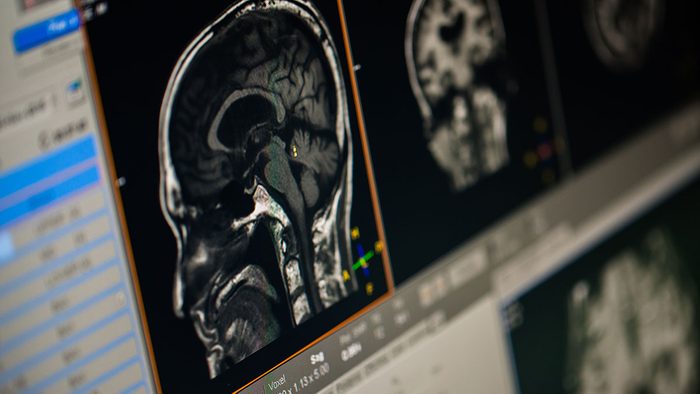
Stroke
About 55,000 more women have strokes than men in a year, and more women die from them, according to the American Heart Association and American Stroke Association. “There is a greater risk of stroke in women who take oral contraceptive pills, hormone replacement therapy with higher doses of estrogen, as well as in pregnant women and women who have recently delivered a child,” says Diana Greene-Chandos MD, FNCS, assistant professor of Neurosurgery and Neurology at The Ohio State University Wexner Medical Center. “Higher hormone levels are known to have a pro-coagulant effect, so the blood can clot more readily with higher levels or rapidly changing levels of hormones.” Pregnancy complications like preeclampsia can also up your long-term stroke risk. In addition, women are more prone to other stroke risk factors like autoimmune conditions, migraines, and depression. Reduce your risk by maintaining healthy diet and exercise habits, having your blood pressure checked, and not smoking.
If you’re at risk for a stroke, follow these rules for lowering your blood pressure naturally.
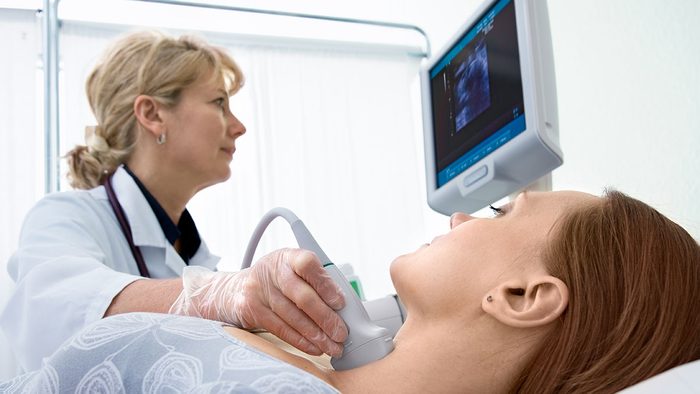
Thyroid disease
According to the American Thyroid Association, women are five to eight times more likely to have a thyroid problem than men, and one in eight women will develop it during her lifetime. Hypothyroidism, in which your thyroid doesn’t produce enough hormones to regulate your metabolism, is the most common thyroid issue. And, if you have been diagnosed with hypothyroidism, there’s a 90 percent chance that it’s caused by Hashimoto’s thyroiditis, an autoimmune disease, says biophysicist Sarah Ballantyne, PhD, creator of The Paleo Mom. “Symptoms of Hashimoto’s thyroiditis include weight gain, headaches, depression, fatigue, cold hands and feet, constipation, dry skin, hair loss or thinning hair, joint pain stiffness, muscle aches, memory problems or brain fog, and heavy or irregular menstrual periods in women.” Luckily, it can be diagnosed with a simple blood test and easily treated with medication.
Here are the symptoms to check for and how to cope if you do have a thyroid disorder.
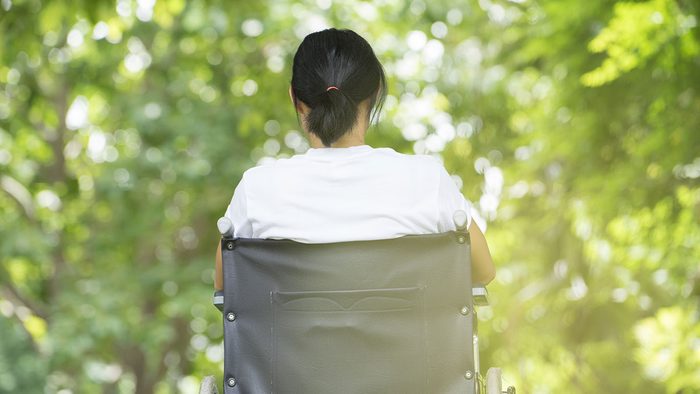
Multiple sclerosis
Yet another autoimmune disease that attacks women more than men is multiple sclerosis (MS). With MS, your body attacks the nerves in the brain and spinal cord, resulting in pain, numbness, and weakness. According to researchers at Johns Hopkins, the greater amount of body fat in women may play a role in more inflammation, which is linked to the disease. Hormonal factors and sex differences in the brain, according to research, may contribute as well. Treatment to slow the progression of MS involves physical therapy, medications, and lifestyle modifications.

Celiac disease
Otherwise known as a gluten intolerance, celiac is an autoimmune condition in which the body attacks the digestive system, marked by diarrhea, bloating, gas, and heartburn. More than half of sufferers are women, according to the HHS. Symptoms may sometimes be confused with irritable bowel syndrome (IBS), which is also more common in women. Eating gluten-free can relieve celiac symptoms, though. Interestingly, Hashimoto’s is associated with other autoimmune diseases, including celiac, says the American Thyroid Association. “Hashimoto’s disease is frequently co-morbid with celiac disease, meaning you have a higher chance of having both diseases if you’ve been diagnosed with one or the other,” says Dr. Ballantyne. “This is because the same gene that increases the risk of celiac disease, the variant HLA-DQ2, also increases the risk of Hashimoto’s thyroiditis.”
This asparagus and pancetta gluten-free pasta is the perfect meal for any day of the week.
